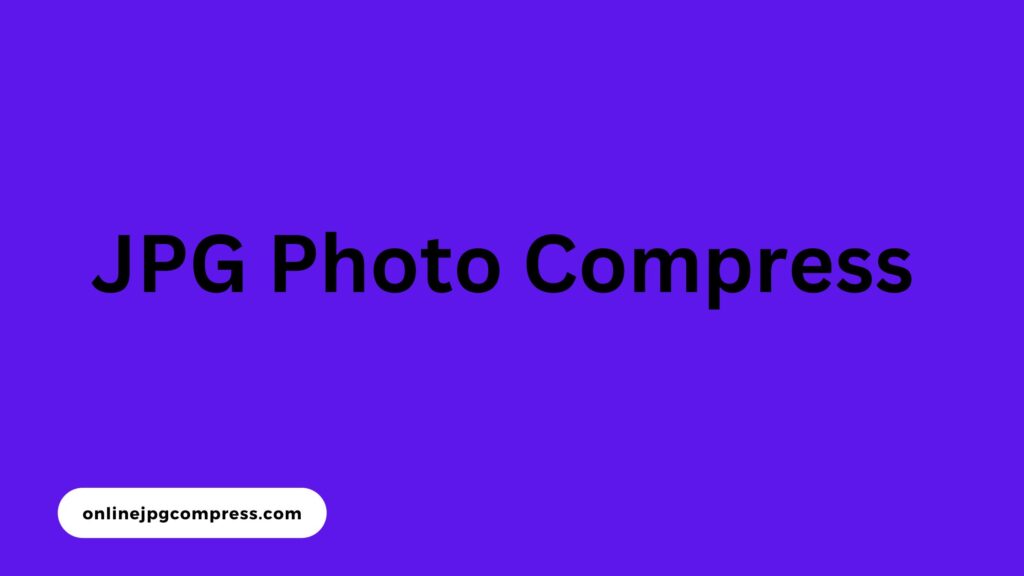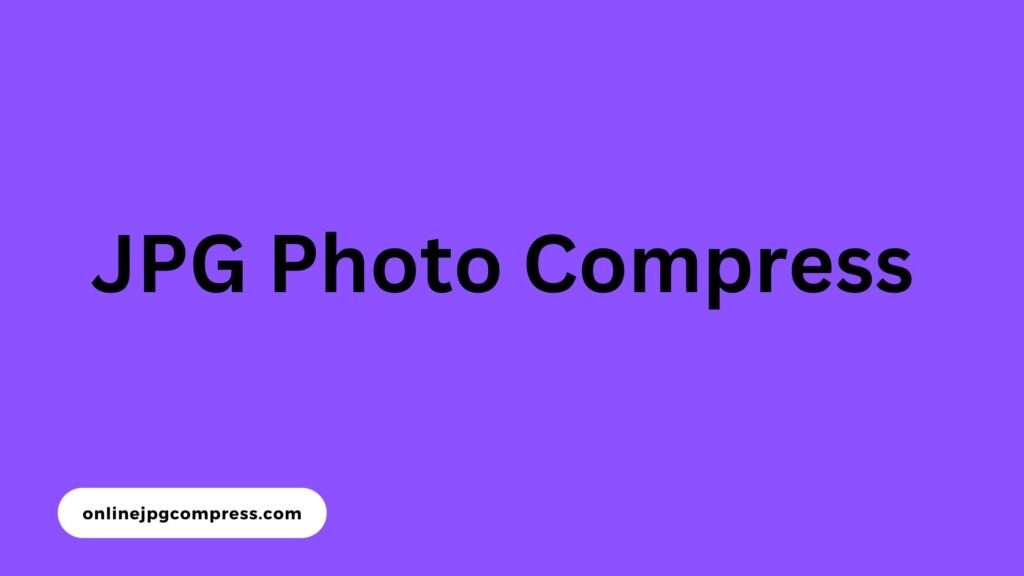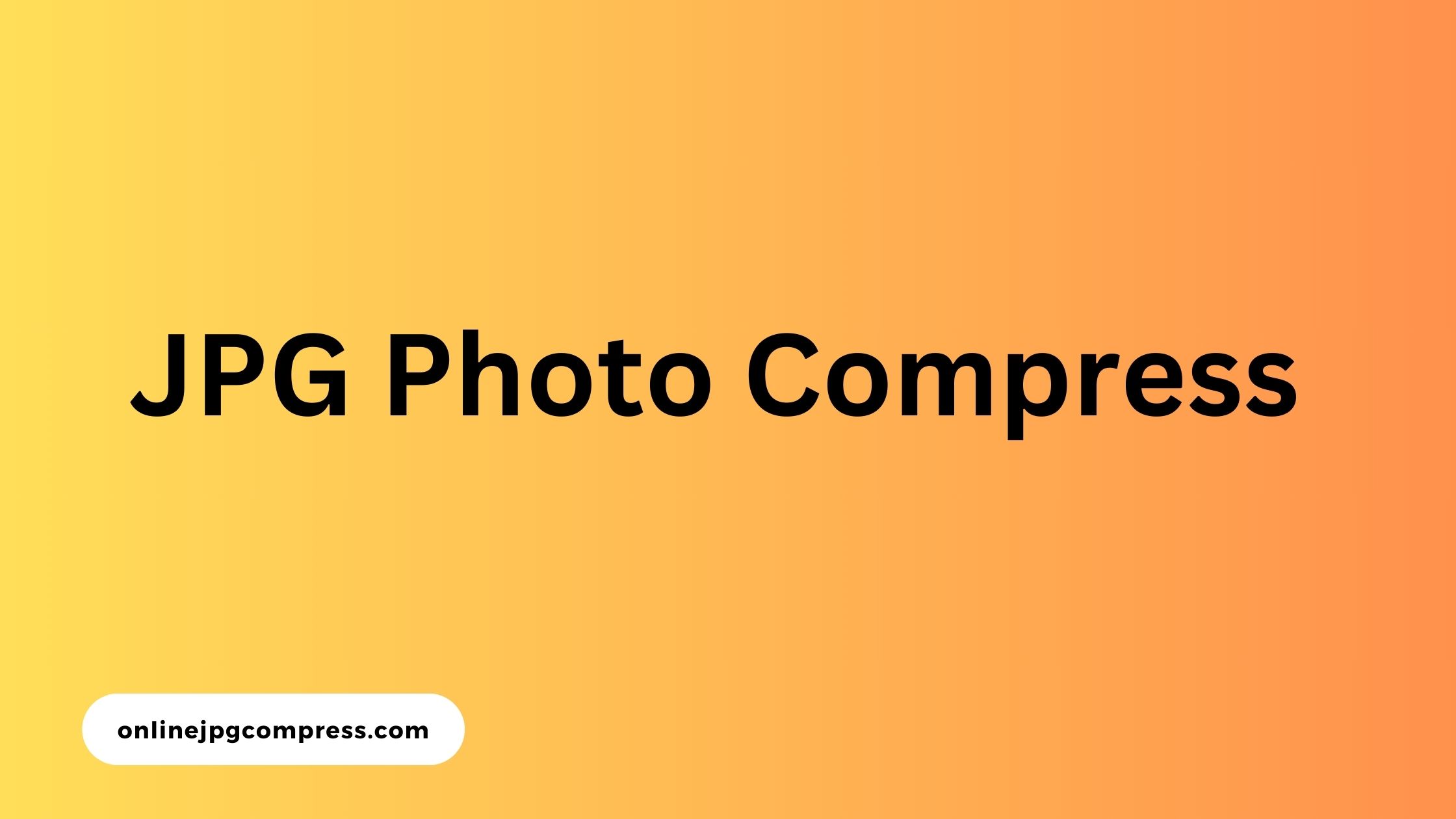Introduction
In the era of digital dominance, JPG Photo Compress plays a pivotal role in conveying messages, preserving memories, and enhancing online experiences.
However, the larger the image files, the slower the websites and the more significant the storage requirements.
This is where JPG photo compression comes into play, offering an efficient solution to maintain image quality while reducing file size.
In this guide, we will explore the importance of JPG photo compression and how individuals and businesses in the United States can benefit from it.
Read this – Optimizing Web Performance: A Guide to Efficiently Compress a JPG Files

What is JPG Photo Compression?
JPG, or JPEG, stands for Joint Photographic Experts Group, the committee that developed this widely used image compression format.
JPG compression allows you to reduce the file size of images without sacrificing too much quality. It achieves this by removing unnecessary data and compressing the remaining information.
Why is JPG Photo Compression Important?
Faster Loading Times: In the competitive online landscape, users demand fast-loading websites. Compressed images ensure quicker load times, leading to a better user experience and higher retention rates.
Bandwidth Savings: For businesses hosting a website, compressing images reduces the amount of data transferred, saving on bandwidth costs.
Storage Efficiency: Compressed images take up less storage space, allowing individuals and businesses to store more images without the need for extensive storage solutions.
Improved SEO: Search engines prioritize websites with faster loading times. By compressing images, you enhance your site’s performance, positively impacting its search engine ranking.
How to Compress JPG Photos
Online Tools: Numerous online tools, such as TinyPNG, JPEG-Optimizer, and Compressor.io, allow users to upload and compress JPG images easily.
Desktop Software: Software like Adobe Photoshop, GIMP, and ImageOptim offer advanced image compression features for users who prefer desktop applications.
Plugins and Extensions: Content Management Systems (CMS) like WordPress offer plugins and extensions that automatically compress images upon upload, streamlining the process for website owners.
Command-Line Tools: For tech-savvy users, command-line tools like ImageMagick provide powerful options for bulk image compression.
Best Practices for JPG Photo Compression:
Balance Quality and Size: Find the right balance between image quality and file size to ensure an optimal viewing experience without compromising load times.
Backup Originals: Always keep a backup of the original, uncompressed images in case you need them for future use.
Regular Maintenance: Schedule regular maintenance to review and compress images on your website, ensuring optimal performance over time.

Conclusion
JPG photo compression is a valuable tool for individuals and businesses in the United States looking to optimize their online presence.
By implementing efficient compression techniques, you can enhance user experience, reduce storage costs, and boost your website’s SEO.
Stay ahead in the digital landscape by harnessing the power of JPG photo compression for a faster, more efficient

1 thought on “JPG Photo Compress: A Guide for Efficient Image Handling in the United States”